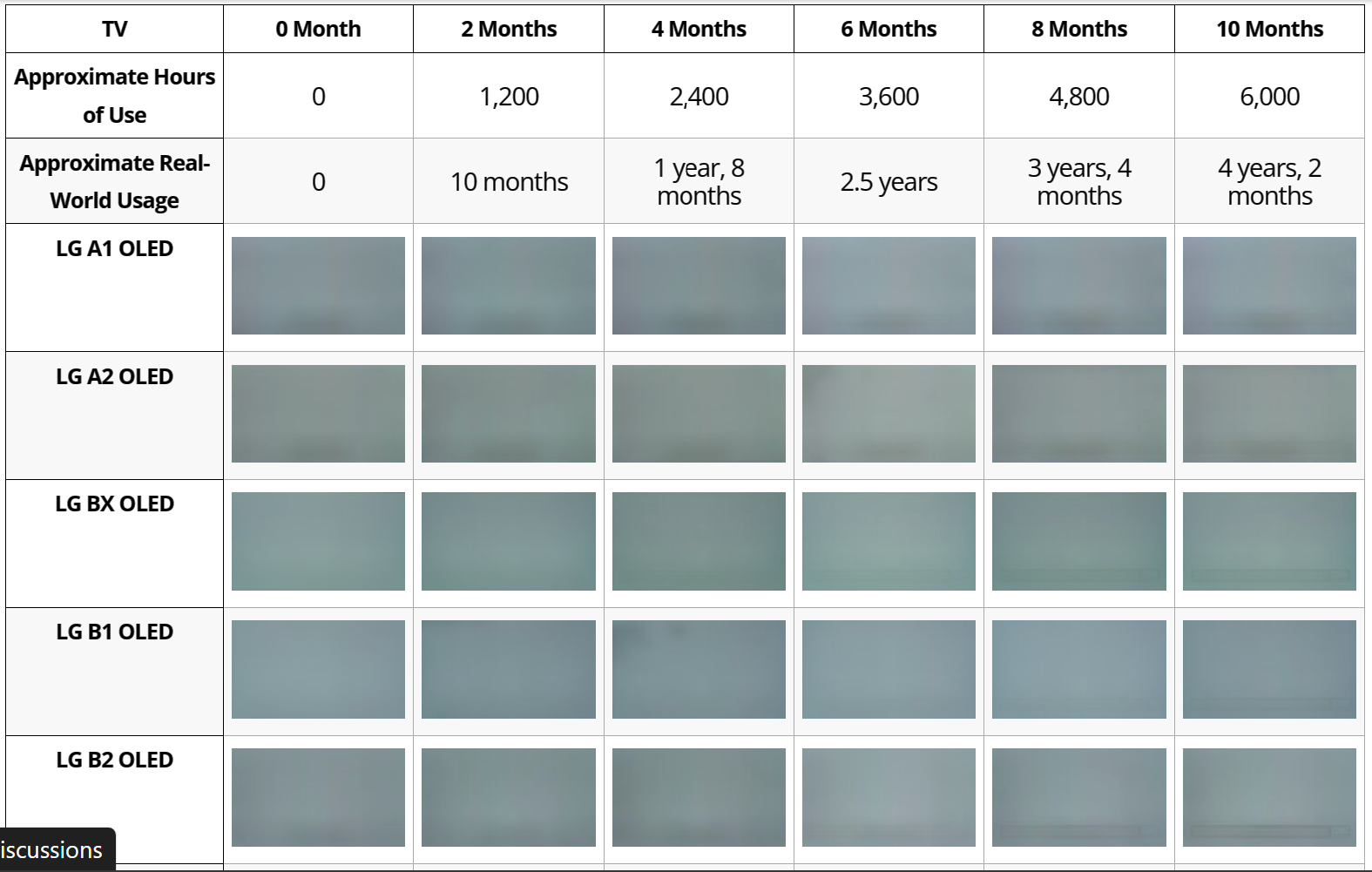
[ad_1]
In brief: While it’s certainly true that the issue of OLED burn-in has improved over the years thanks to technological advances and new monitor/TV features, the problem hasn’t disappeared entirely. A new test that simulates years of usage confirms that every OLED will eventually start showing signs of burn-in, but the good news is that the severity of the issue does vary greatly, and monitors are less prone to image retention than TVs.
RTINGS.com’s longevity test involves over 100 TVs and three OLED monitors running a CNN 24/7 news feed at maximum brightness. The test has run for ten months, or 6,000 hours, simulating 4 years and two months of approximate real-world usage.
While some form of permanent burn is present in every OLED tested, the severity varies greatly based on the particular model. Some TVs improved in months eight and ten due to RTINGS forcing a short compensation cycle on these TVs before taking pictures and brightness measurements. The process is supposed to run automatically on all OLEDs, but some manufacturers didn’t implement the process very well.
Even the LCD TVs are showing uniformity issues, which the publication says can be more distracting than burn-in. These zebra-stripe patterns of alternating bright and dark bands are nearly the same across all affected LCD TVs (below).
Seven of the TVs failed or have shown signs of failure during the course of testing, though some have been repaired and are now working without issue: the Hisense U7G, Samsung S95B OLED, Sony X95J, LG 27GR95QE-B, Sony A80K OLED, LG G2 OLED, and Samsung QN900A.
Moving onto the OLED monitors, it was interesting to discover that the two ultrawide (21:9) products, Alienware’s AW3423DWF and Samsung’s Odyssey G8, were originally running the CNN news feed in 16:9. However, Samsung Display confirmed that running content with black bars on the left and right side of screen makes the center area brighter than the unused areas.
The test shows that the two ultrawides are displaying “heavy differential wear” after 700 hours of playing the 16:9 feed. The areas where the bars had been were brighter than the central area. If the testing wasn’t changed, the monitors would likely have experienced irreversible and noticeable damage.
The OLED monitors have been undergoing testing for six months (3,600 hours), slightly less time than the TVs. The good news for owners or anyone considering buying one is that they have shown minimal OLED degradation and expected aging so far.
[ad_2]

